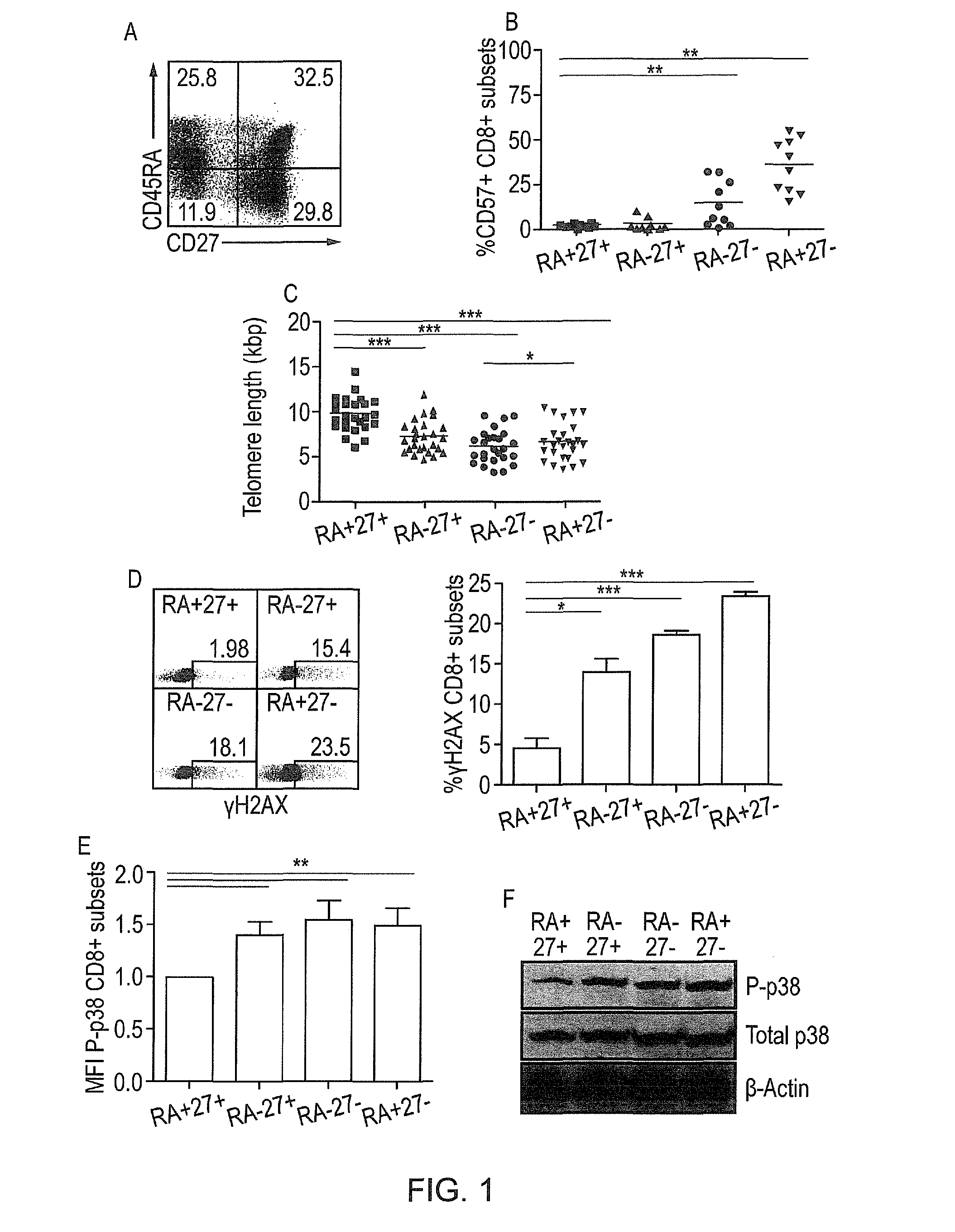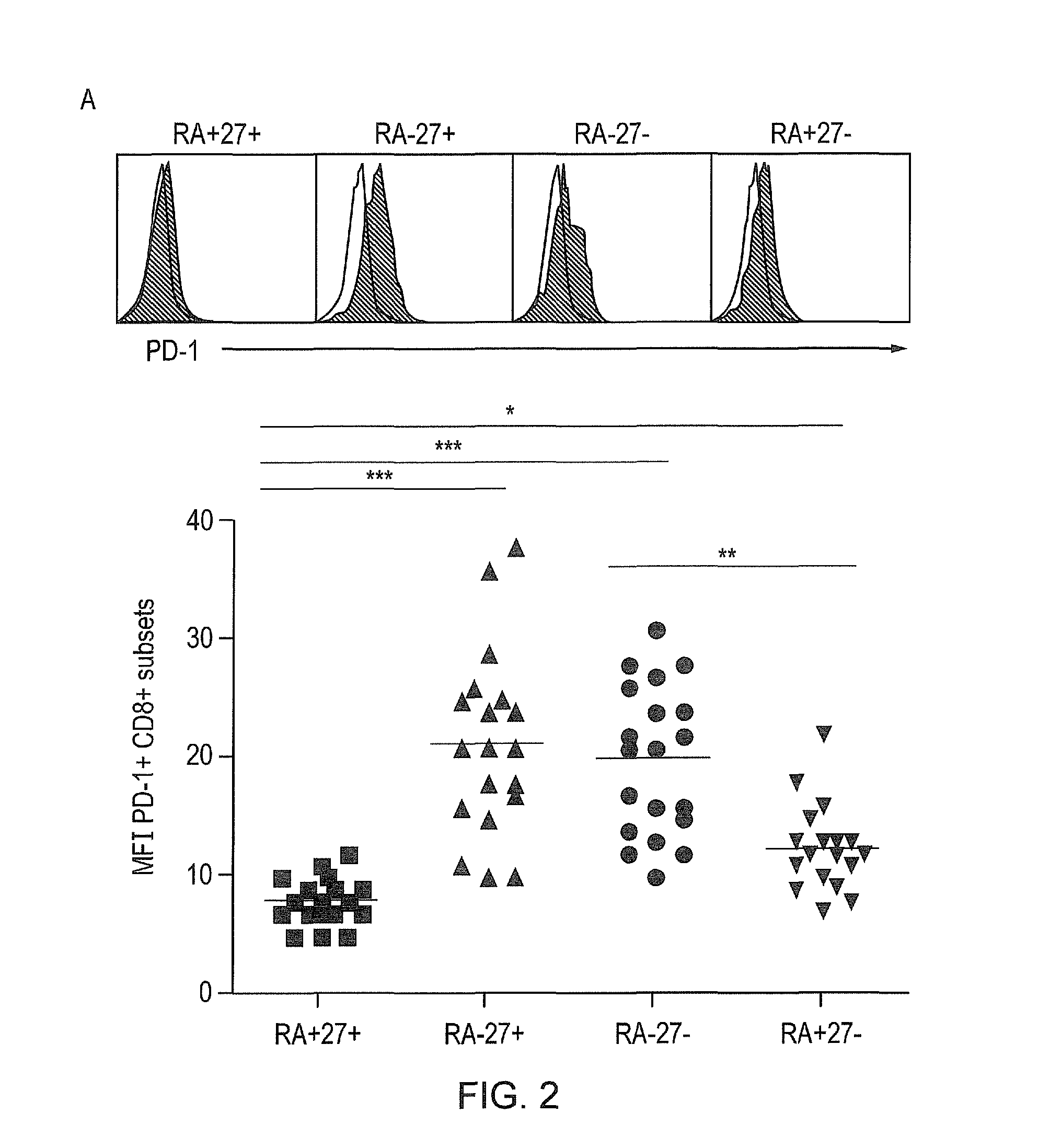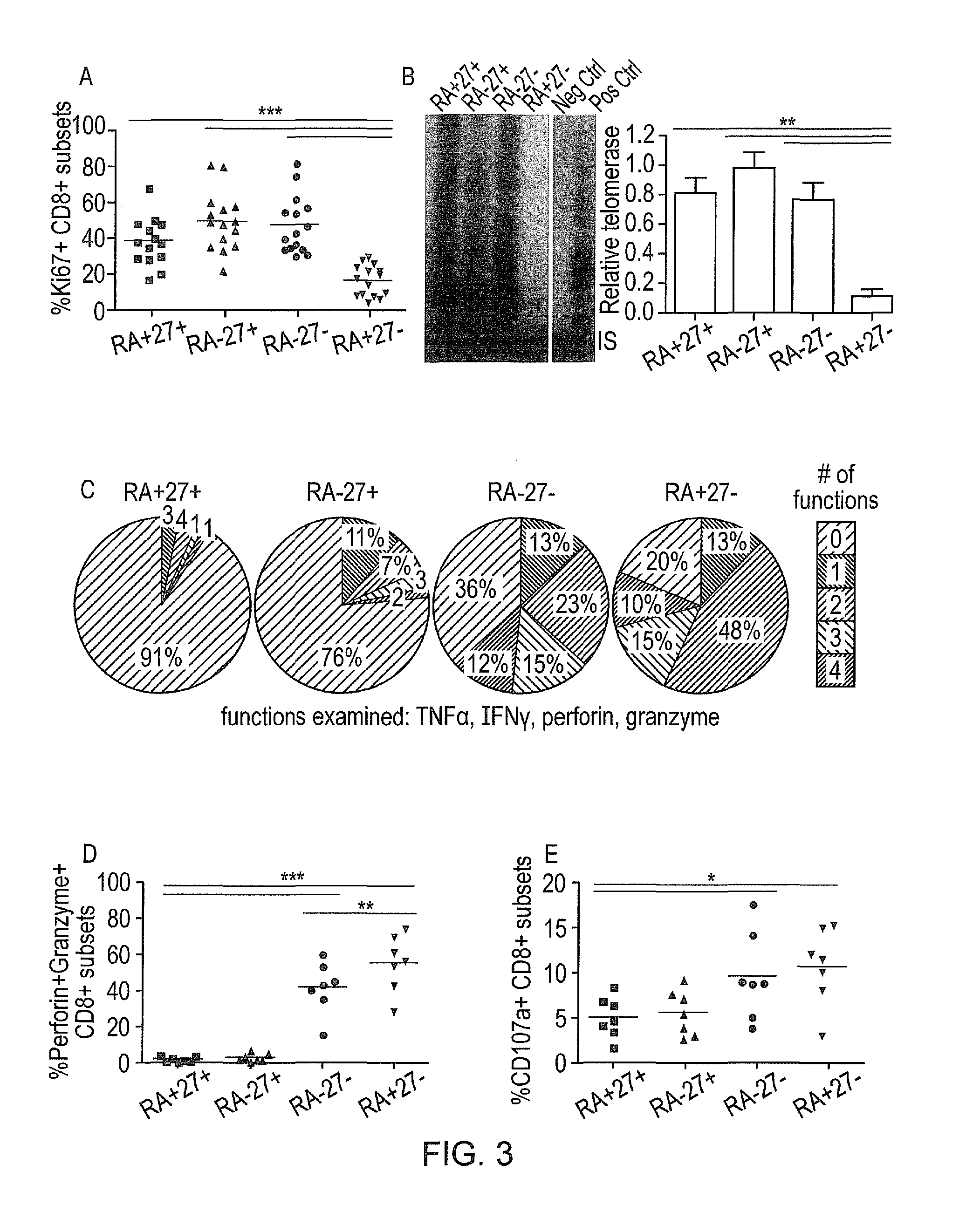Method to improve the immune function of t cells
a technology of immune function and composition, which is applied in the field of methods and compositions for enhancing the immune function of t cells, can solve the problems that cannot be achieved by blocking either pathway alone, and achieve the effect of enhancing the immune response to vaccination and enhancing the immune function of a t cell
- Summary
- Abstract
- Description
- Claims
- Application Information
AI Technical Summary
Benefits of technology
Problems solved by technology
Method used
Image
Examples
example 1
CD45RA+CD27− CD8+ T Cells Exhibit Characteristics of Senescent T Cells
[0126]Human CD8+ T cells can be subdivided into 4 populations on the basis of their relative surface expression of CD45RA and CD27 molecules (FIG. 1A). Four subsets can be defined, namely naïve (N: CD45RA+CD27+); central memory (CM: CD45RA−CD27+); effector memory (EM: CD45RA−CD27−); and effector memory T cells that re-express CD45RA (EMRA: CD45RA+CD27−). These subsets are analogous to those identified in other reports where surface CCR7 together with CD45RA expression were used to distinguish between T cells at different stages of differentiation. The present inventors found that CD45RA+CD27− CD8+ T cells express significantly greater levels of surface CD57, that defines highly differentiated and / or senescent T cells compared to the other subsets (FIG. 1B; P+ T cells defined using the same markers (Di Mitri et al., 2011, as above). The shortening of telomeres triggers a DNA damage response that can be quantified b...
example 2
Expression of PD-1 During CD8+ T Cell Differentiation
[0127]PD-1 is the most investigated inhibitory receptor that is expressed by exhausted CD8+ T cells. However, little is known about how the expression of this molecule changes during human T cell differentiation. When the expression of PD-1 on CD45RA / CD27 defined CD8+ T cell subsets was examined, the highest level of expression was found to be on the CM (CD45RA−CD27+) and EM (CD45RA−CD27−) subsets (FIG. 2). The EMRA population expressed significantly higher levels of this molecule than naïve CD8+ T cells but lower levels of this molecule the CM and EM cells (FIG. 2). These results suggest that, based on PD-1 expression, the EMRA subset is unlikely to be an exhausted population.
example 3
Differentiation-Related Functional Changes in Human CD8+ T Cells
[0128]The proliferative activity of isolated CD8+ T cells was investigated at different stages of differentiation. The EMRA population T cells showed significantly less proliferative activity after activation, as defined by Ki67 expression, compared to the other subsets (FIG. 3A; P+ T cells were found to have low telomerase activity and low telomerase activity was found to be confined to the EMRA and not the EM subset (FIG. 3B).
[0129]The effector capability of CD8+ T cells was investigated at different stages of differentiation using multi-parameter flow cytometry to analyse the expression of TNFα, IFNγ, perforin and granzyme B after anti-CD3 stimulation (FIG. 3C). It was found that, despite the decreased proliferative function and low telomerase activity, the highly differentiated CD45RA+CD27− T cells were more multifunctional than the other subsets and contained significantly more cells that expressed 2 functions comp...
PUM
 Login to View More
Login to View More Abstract
Description
Claims
Application Information
 Login to View More
Login to View More - R&D
- Intellectual Property
- Life Sciences
- Materials
- Tech Scout
- Unparalleled Data Quality
- Higher Quality Content
- 60% Fewer Hallucinations
Browse by: Latest US Patents, China's latest patents, Technical Efficacy Thesaurus, Application Domain, Technology Topic, Popular Technical Reports.
© 2025 PatSnap. All rights reserved.Legal|Privacy policy|Modern Slavery Act Transparency Statement|Sitemap|About US| Contact US: help@patsnap.com



